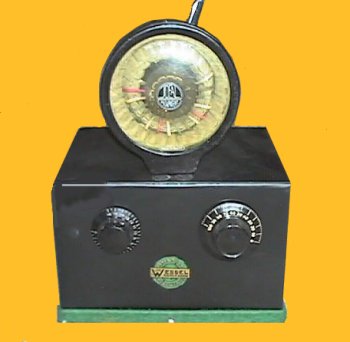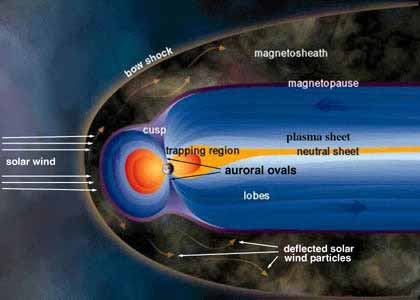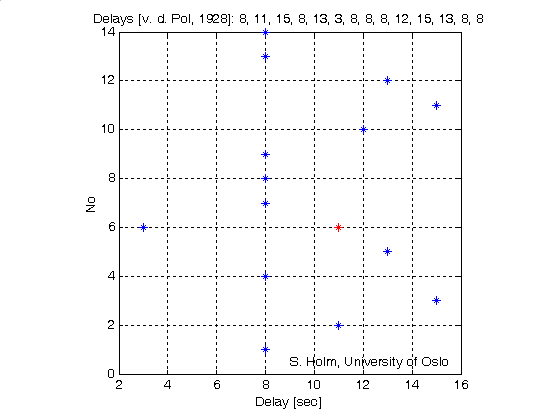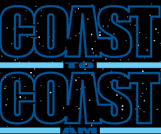GHOST, ORBS AND PARANORMAL PAGES
TIME TRAVEL PAGES COOL STUFF!!
NEW EARTH SHOTS NIGHT TIME EARTH LIGHTS!! A MUST SEE!!
ELDRIDGE PHILADELPHIA EXPERIMENT
TIME TRAVEL LINKS 2 PAGES OF COOL LINKS!!
PROJECT HAARP IS THIS MIND CONTROL??
MUSIC R&D FOR MK AND REPRODUCING THAT TONE
MK MIND KONTROL AND MIND CONTROL
USE THE NEW LINKS BELOW:
THIS WAS A GOOD ARTICLE FROM THE NET LOOKS LIKE TIME TRAVEL OR TIME VIEWING!
Mystical delayed radio signals received in Oslo
Radio waves travel so fast that most people consider them to reach their destination instantaneously. The only exception is a TV newscast with a live interview to another continent. The satellite connection gives a delay of about half a second from the end of a question to the start of the response. Still, much longer delays have been experienced from the beginning of the radio era. Such echoes occur very seldom and are called long delayed echoes.My interest in this was started when I read the intriguing short essay by Stan Horzepa in October 2003 entitled "Surfin': Radio Ghosts" where he lists some of the current theories about these echoes. An interesting aspect of this phenomenon for me is that the first observations took place in Oslo, actually at what is today called Bygdøy, a Western suburb which I pass on my daily commute to work. The first report was published 75 years ago by professor Carl Størmer, University of Oslo, known for being the first to measure the height of the northern lights, and it starts like this [Størmer, 1928]:
 |
This lead to more investigations and even simultaneous observations in Norway and the Netherlands of the PCJJ signals at a wavelength of 31.4 meters (9.55 MHz) [v. d. Pol, 1928].
At that time, radio was a novel and unexplored field; it was for instance only three years since the US government had tried to get all transmitters in the country to observe radio silence for 5 minutes every hour for two days to listen for signals from Mars.
I decided to study the topic of long-delayed echoes (LDE) in detail and I went through the papers listed at the end, with the aim of finding out the status of possible natural explanations. This resulted in an essay published on the main site for popular research in Norway. Parts of the fascination and mystique about long-delayed radio echoes are that they are still not properly explained. This has also led to some rather exotic explanations involving extra-terrestrials, listed at the end here.
Natural mechanisms
Shlionskiy [1979] divides possible explanations in two groups: Reflections outside the earth system and effects in the earth's ionosphere or magnetosphere. He lists four hypotheses in the first group and eleven in the second. A mind-boggling fact is that the several of the explanations involve media where radio waves no longer travel in straight lines, or at much lower speeds than 300,000 km/sec. An excellent historical review is given by Muldrew [1979].I follow Vidmar and Crawford [1985] and discuss here the five most likely explanations, listed roughly according to the frequencies they apply for.
- Ducting in the magnetosphere and ionospheric reflection.

Magnetic field lines in the magnetosphere (Illustration by NASA)
The radio signal has to pass through the lower ionosphere near the transmitter site. Then it has to be ducted along the earth's magnetic field lines to the other hemisphere of the earth. This duct makes the radio wave travel in a curved path. At the other side of the earth, the radio signal is reflected from the upper ionosphere and then it follows the same path back [Muldrew 1979]. The electromagnetic wave will follow the magnetic field line closest to earth on its night-side in this illustration. It is most likely to occur during winter months of years of low solar activity, 2-3 weeks after full moon, and at about 2 MHz [Ellis, Goldstone, 1990].Characteristics: Frequencies in the 1-4 MHz range and duration up to 0.5 sec. The short delay time places this effect in a different league than the next four effects.
This effect has been confirmed to occur, both in the 3.5 MHz amateur band [Villard et al, 1980], and the 1.8 MHz amateur band [Blagoveshchensky et al, 1997].
An observation report on 3.915 MHz from the fall of 1974, which most likely is this effect.
- Travel many times around the world.
Signals that travel once around the earth are a common phenomenon and occur with a delay of about 1/7 of a second. Signals that travel a few times around the world are also not uncommon (listen to an example here). It is conceivable that a signal can travel many times around the earth and that there may exist mechanisms that cause focusing or amplification of the wave so that attenuation will be much less than expected [Shlionskiy, 1989].Goodacre [Goodacre, 1980] reports that he pointed his antenna towards the horizon and received his own 28 MHz signal delayed by up to about 9 seconds. A statistical analysis of the delays revealed a periodicity of 0.138 seconds, i.e. the travel time for a signal around the earth. His measurement implies travel up to 65 rounds around the earth. This happened in Nov. and Dec. 1978 and Jan. 1979, i.e. about one year before the peak of solar cycle 21. This frequency is about the upper limit that this effect could apply for.

The ionosphere (Illustration by NASA) - Coupling to mechanical waves in the ionosphere.
This phenomenon may take place on the top of the ionosphere where the incident electromagnetic wave is coupled to a longitudinal plasma wave of low group velocity (~ 1km/sec). The energy will travel along the magnetic field waves, and an amplification of the plasma wave will take place by beam-plasma interaction. The extent of the region where this can take place is in the order of 10 km. Then a new mode-coupling will take place back to electromagnetic energy. The effect occurs for frequencies near the maximum frequency reflected from the F2 ionospheric layer (f0F2), typically 5-10 MHz, but occasionally up to some 20 MHz.This effect was investigated experimentally [Crawford et al 1970] and [Vidmar and Crawford, 1985]. Although several echoes were recorded with delays up to about 40 seconds, the authors do not draw any firm conclusion. The tests took place at 5-12 MHz in 1967-1970, and in Alaska at 5.8 MHz in 1978.
Look here for today's ionosonde data and f0F2 for Tromsø, Norway.
- Reflection from distant plasma clouds.
This hypothesis assumes a cloud of ionized gases and particles, coming originally from the sun. The main problem with this hypothesis is that Doppler shifts would easily be too great and received signals too weak. One possible exception is if the plasma cloud is located in the earth-sun Lagrangian points L1 or L2, which follow the earth's movement. This would give rise to echoes in the 8-10 seconds range for signals that pass through the ionosphere, i.e. mostly high HF and VHF/UHF signals.Budden and Yates [1952] conducted experiments from 1947-1949 at 13.5 and 20.7 MHz with vertical transmission to test if they could receive such echoes, but in 27000 transmissions they did not detect a single echo.
On the other hand Freyman [1981] did experiments from Alaska in the auroral zone at 9.9 MHz. He wanted to test if radio waves would be guided along magnetic field lines and be reflected off solar plasma. He detected several thousand echoes of delay up to 16 seconds at times when there was a change in the magnetic field and solar plasma probably entered the magnetosphere.
- Non-linearity in addition to coupling to mechanical waves.
Another possible explanation for VHF and UHF echoes was proposed by Muldrew in 1979. It assumes the presence of an unknown second transmitter, and that non-linearity generates a difference frequency that falls in the range of f0F2. The difference frequency is then subject to the former coupling effect to mechanical waves. The difference frequency then propagates as a plasma wave, and then it couples back via the second transmitter's frequency to the original frequency and propagates normally back to the observer.This effect could account for larger variations in delay time than the former hypothesis. It could explain radio amateur observations of echoes in the 50, 144, 432 and 1296 MHz bands, especially during attempts at Earth-Moon-Earth communication.
One UHF example is Hans Rasmussen's (OZ9CR) report on echoes delayed by 4.6 seconds at 1296 MHz [Rasmussen, 1975]. Another example, documented by a strip-chart recording, is an observation at 432 MHz of a delay of about 5.75 seconds by John Yurek (K3PGP).
Extra-terrestrial explanations
The fact that there is no consensus on the explanation of long delayed echoes, naturally leads to some rather imaginative explanations. They are based on interpretation of the delay times recorded in the first reports of long-delayed echoes.- Message from extra-terrestrials located in the trailing moon-earth
Lagrangian
point (L4 or L5) with a message
about their origin. This
theory is credited to Duncan A. Lunan who published it as "Spaceprobe from
Epsilon Bootes" in Spaceflight, the journal of the British Interplanetary
Society in 1973. Here are the delays from [v. d. Pol, 1928] plotted:

The points plotted to the right of the axis at a delay of 8 seconds are supposedly how the constellation Bootes looked 12,600 years ago. To achieve this image, the point for delay no 6 at 3 seconds, has to be moved to 8+3=11 seconds (the red point). See original figure halfway down this page. This kind of data massaging is usually not considered to be good science!
- Filipenko uses the integer delays as a means of looking up elements in
the periodic table, and finds that extra-terrestrials may have communicated
to us already in 1928 how to make
modern semiconductors.
- Here is another interpretation by Rashid Faizullin, seemingly also a geometrical interpretation in terms of positions of stars.
- Measurement round-off. The delays are all integer values, while papers after the early 1930's all report delays with fractional seconds. I attribute this to improvements in measurement technology. The radios at that time were quite experimental as commercial short wave broadcasting had not yet started. They used 'oscillographs' for recording signals, which means reading out a distance on a piece of paper or film. It could also be that some of the time delays were measured with mechanical stop watches with something like 1/10 second resolution. Due to the many sources of measurement errors that they all were aware of, they may have just rounded the results to integers.
- One second unit. The second is not a universal unit, but originally related to human physiology, as a typical heart beat lasts for one second. If the extra-terrestrial civilization knew us so well that they knew our units for time, then they for sure would know a lot of other things about us as well. Why didn't they choose to communicate to us in a much more obvious way, with all that background knowledge about us already?
- Probability of sequence. Any interpretation of a sequence of numbers should be based on an underlying calculation of probabilities. How likely is this sequence if the numbers are drawn from a random generator? The delay sequences are relatively short, so I would not be surprised if there is a considerable likelihood that they can be generated from random numbers.
References
- C. Størmer, "Short wave echoes and the aurora borealis," Nature, No. 3079, Vol. 122, p. 681, Nov. 3, 1928.
- B. v. d. Pol, "Short wave echoes and the aurora borealis," Nature, No. 3084, Vol. 122, pp. 878-879, Dec. 8, 1928.
- K. G. Budden and G. G. Yates, "A search for radio echoes of long delay," J. Atmos Terr. Phys., 2, 272, 1952.
- F. W. Crawford, D. M. Sears, R. L. Bruce, "Possible observations and mechanism of very long delayed radio echoes," Journ. Geophys. Res., vol. 75, no. 34, pp. 7326-7332, Dec. 1970.
- H. L. Rasmussen, "Ghost echoes on the Earth-Moon path," Nature, Vol. 257, p 36, Sept. 4, 1975.
- D. B. Muldrew, "Generation of long-delay echoes," Journ. Geophys. Res., vol. 84, no. A9, pp. 5199-5215, Sep. 1979.
- A. K. Goodacre, "Observations of long-delayed echoes on 28 MHz," QST, March 1980, pp. 14-16.
- A. K. Goodacre, "Some observations of long-delay wireless echoes on the 28-MHz amateur band," Journ. Geophys. Res., Vol. 85, No. A5, pp. 2329-2334, May 1980.
- O. G. Villard, D. B. Muldrew, and F. W. Waxham, "The magnetospheric echo box - A type of long-delayed echo explained," QST, Oct. 1980, pp. 11-14.
- R. W. Freyman, "Measurements of long delayed radio echoes in the auroral zone," Geophys. Res. Letters, Vol. 8, No. 4, pp. 385-388, April 1981.
- R. J. Vidmar and F. W. Crawford, "Long-delayed radio echoes: Mechanisms and observations," Journ. Geophys. Res., vol. 90, no. A2, pp. 1523-1530, Feb. 1985.
- A. G. Shlionskiy, "Radio echos with multisecond delays," Telecomm. and Radio Eng., Vol 44, No. 12, pp. 48-51, Dec. 1989.
- G. R. A. Ellis and G. T. Goldstone, "The probability of observing ducted magnetospheric echoes from the ground," Journ. Geophys. Res., vol. 95, no. A5, pp. 6587-6590, May. 1990.
- V. Grassmann, "Long-delayed radio echoes, Observations and interpretations," VHF Communications vol 2, pp. 109-116, 1993.
- D. V. Blagoveshchensky, K. A. Dobroselsky, O. A. Mltseva, "Main ionospheric trough as a channel for MF propagation in the magnetosphere," Radio Science, Vol. 32, No. 4, pp 1477-1490, Jul-Aug 1997.
First created 16 March 2004, updated 11 December 2005 and 11 July 2007.
© Sverre Holm
University of Oslo
INFORMATIONAL ONLY!!
THAT NEEDS LOOKING IN TO!!
TIME VIEWING VIA DELAY.... SOUNDS LIKE A TIME VIEWER!!
WEBMASTER
PAUL


![[Most Recent Quotes from www.kitco.com]](http://kitconet.com/images/quotes_7a.gif)



